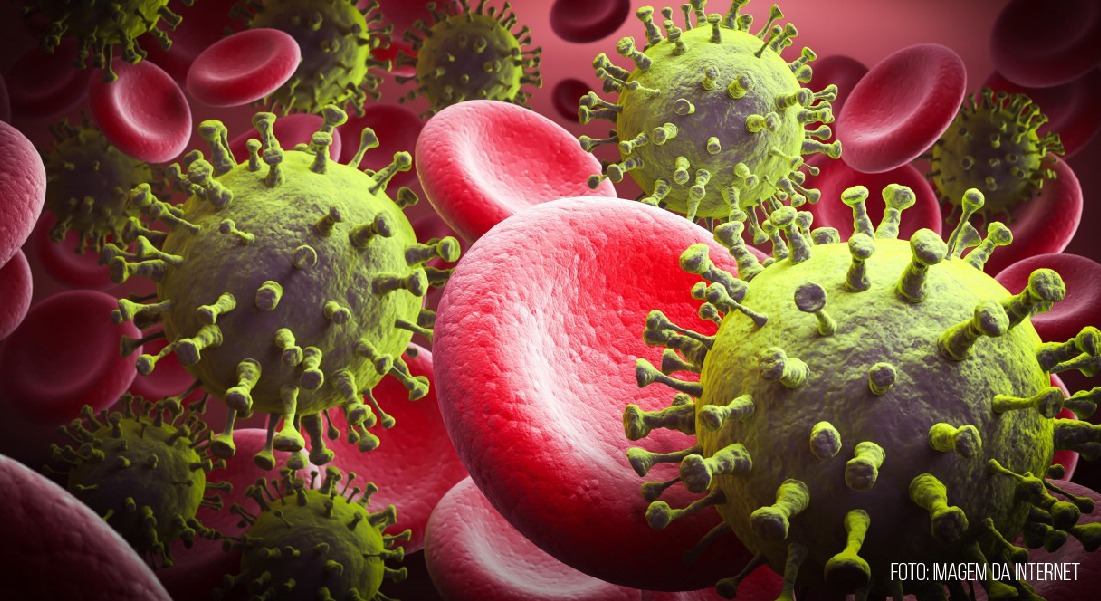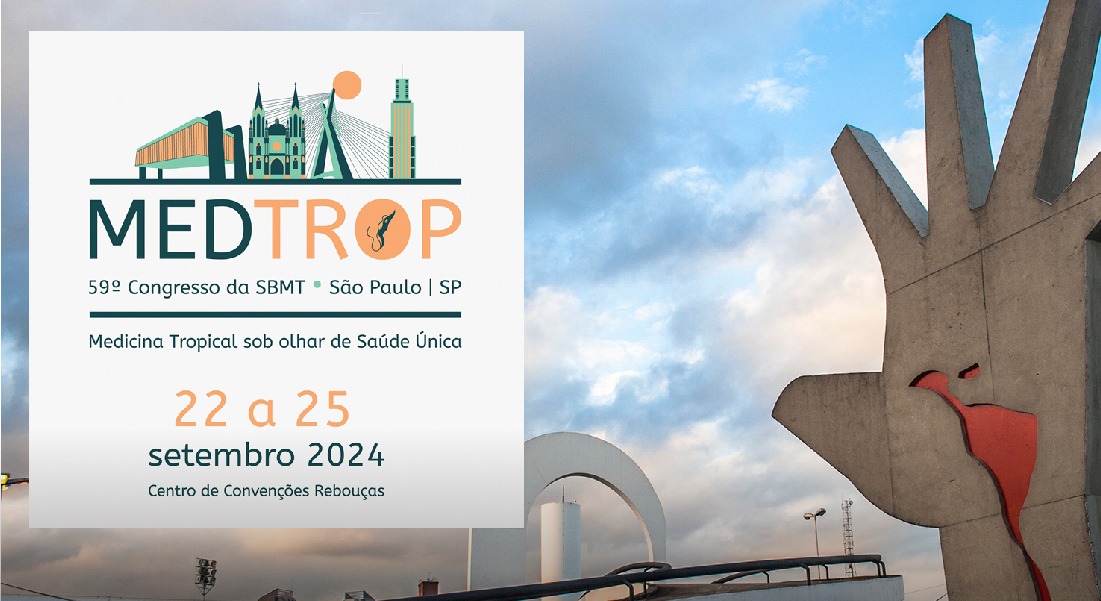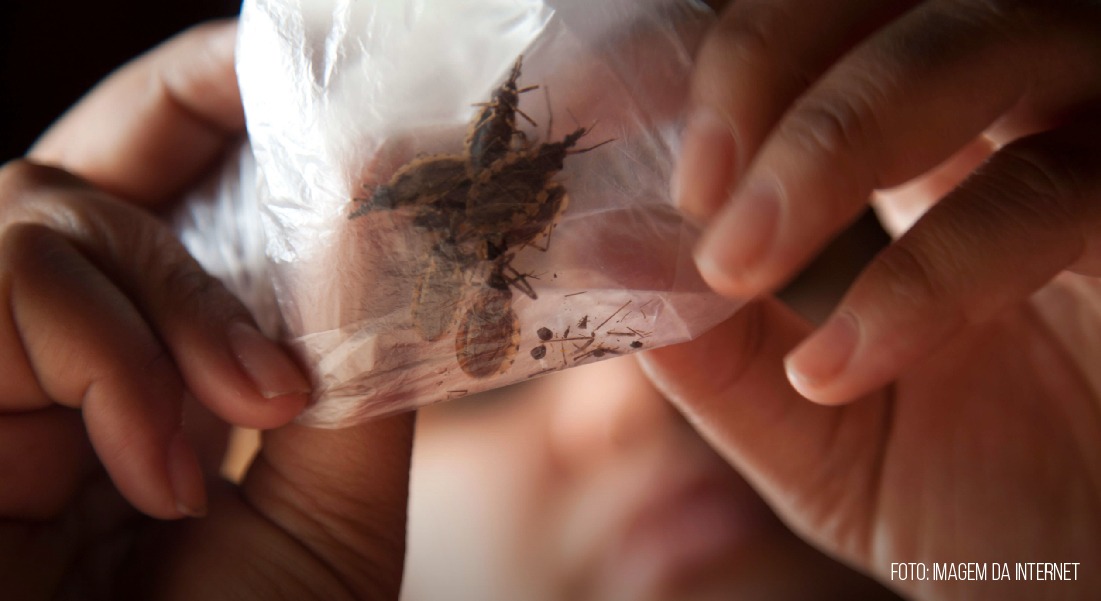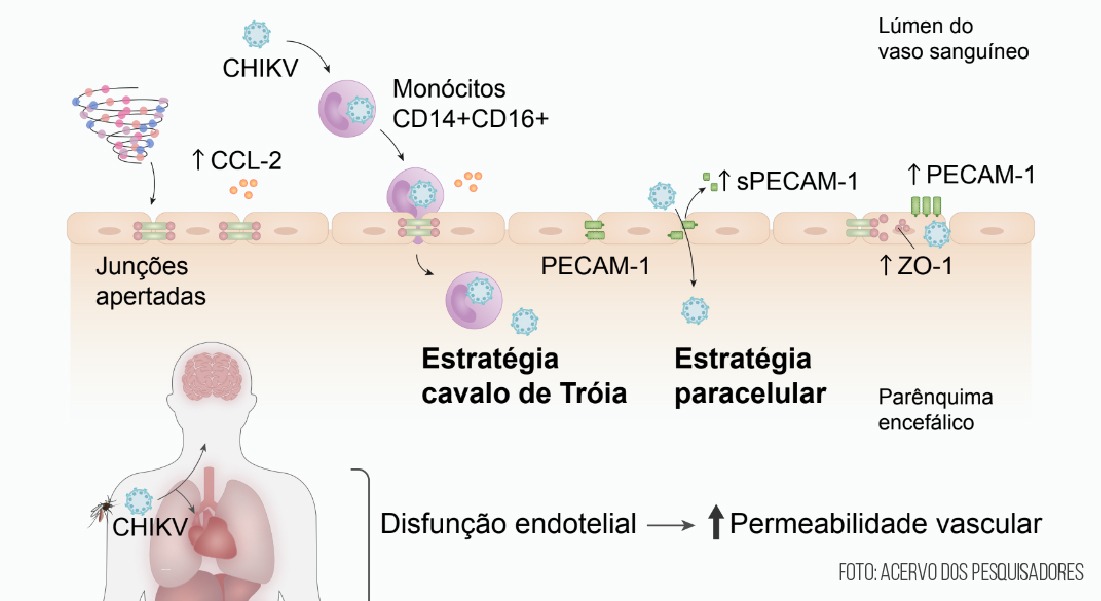
Tuberculose: Apesar dos avanços, erradicação só deve ocorrer em 2050Tuberculosis: Despite enhancements, eradication should only happen in 2050
Em 1982, a Organização Mundial de Saúde (OMS) e a União Internacional Contra Tuberculose e Doenças Pulmonares (Union) In 1982, the World Health Organization (WHO) and the International Union Against Tuberculosis and Pulmonary Diseases (Union)
23/03/2014
Garantia de acesso a serviços de saúde e oportunidades de diagnóstico são fatores protetores e possivelmente mais importantes que estar ou não entre os países em desenvolvimento
Em 1982, a Organização Mundial de Saúde (OMS) e a União Internacional Contra Tuberculose e Doenças Pulmonares (Union) estabeleceram o 24 de março como o Dia Mundial de luta contra a Tuberculose, com o objetivo de dar visibilidade à doença, que mesmo tendo cura, ainda atinge milhões de pessoas em todo o mundo.
Por este motivo, a Sociedade Brasileira de Medicina Tropical (SBMT), aproveita a data, que é uma homenagem aos 100 anos do anúncio do descobrimento do bacilo causador da doença, em 24 de março de 1882, pelo médico Robert Koch, para ouvir o coordenador-geral do Programa Nacional de Combate à Tuberculose do Ministério da Saúde (MS), Dr. Dráurio Barreira.
Ele adianta que, neste ano, além da implantação da rede do teste rápido molecular para tuberculose no Sistema Único de Saúde (SUS), a Pasta lançará nova campanha de combate à doença.
SBMT: Podemos dizer que a tuberculose ainda é um sério problema de saúde publica? Por quê?
DB: Sim, a tuberculose ainda é um grave problema de saúde pública no Brasil e no mundo. Segundo a OMS, estima-se que ocorram 8,6 milhões de casos novos e 1,3 milhões de óbitos ao ano. O elevado número de casos e de óbitos representa uma alta carga para a sociedade e para o sistema de saúde. A tuberculose é uma doença de complexo controle, afetando principalmente populações mais vulneráveis. A associação com outras comorbidades e/ou acompanhamento inadequado do tratamento podem resultar em desfechos desfavoráveis como o óbito ou a resistência aos fármacos.
Segundo a OMS, em 2012, foram notificados 6,1 milhões de casos novos no mundo. O Brasil encontra-se entre os 22 países de alta carga que concentram aproximadamente 80% das ocorrências do mundo, ocupando a 16ª posição em número de registros, tendo notificado 71.230 casos novos nesse mesmo ano.
SBMT: Existem pessoas mais propensas a ter tuberculose? Quais seriam? Por que isso ocorre? Podemos dizer que populações de países em desenvolvimento estão mais propensas?
DB: Há fatores ligados à imunidade que facilitam. Assim, uma vez em contato com o bacilo a pessoa é capaz de desenvolver a doença, a exemplo de ter HIV ou diabetes, ser tabagista e outros. As condições de vida têm forte impacto na saúde das pessoas e podem facilitar o contato e o desenvolvimento da doença. No Brasil, são consideradas populações mais vulneráveis à tuberculose: os indígenas, a população privada de liberdade, as pessoas em situação de rua e as aquelas vivendo com HIV e Aids.
Por outro lado, garantia de acesso a serviços de saúde e oportunidades de diagnóstico são fatores protetores, e possivelmente, sejam mais importantes que estar ou não entre os países em desenvolvimento, pelo menos para o Brasil, pois temos o SUS, e apesar de ainda termos grandes desafios neste tema, um sistema público, gratuito e universal facilita a elaboração e a execução de respostas efetivas para a questão da tuberculose no País.
SBMT: O que pode ser registrado como avanços nos últimos anos para o combate a tuberculose? O diagnóstico e o tratamento da doença são eficazes?
DB: Como avanços mais recentes no combate à tuberculose podemos considerar, na área de diagnóstico, o surgimento do Teste Rápido Molecular (TRM-TB), uma nova tecnologia baseada em exames moleculares que evidencia especificamente o material genético (DNA) doMicobacterium tuberculosis em amostras de escarro. Esse tipo de teste possui uma sensibilidade de cerca de 90%, bem maior que a do método tradicional, a baciloscopia, que possui sensibilidade de aproximadamente 65%. Além disso, o Teste Rápido Molecular tem um ganho adicional, pois evidencia a resistência à rifampicina, um dos principais medicamentos no tratamento da doença e fica pronto em menos de 2 horas.
Vale lembrar que o TRM-TB, não substituirá o exame clássico de baciloscopia. Esta nova tecnologia veio como um método a mais para o diagnóstico da tuberculose pulmonar.
Ainda como avanços, podemos considerar a incorporação do etambutol no esquema de tratamento do Brasil e a utilização dos medicamentos em dose fixa combinada (4 fármacos em um único comprimido – rifampicina, isoniazida, pirazinamida e etambutol), com ganho em qualidade e favorecendo a adesão ao tratamento.
Estão em pesquisa novos fármacos, muito promissores, tanto para tratamento, quando para esquemas profiláticos da tuberculose, porém ainda estão em processo de avaliação, mas que de uma forma geral, quando aprovados, possibilitarão facilidades no uso, menos efeitos colaterais, além de uma possível diminuição do período de tratamento. Atualmente o esquema terapêutico básico (inicial) para a tuberculose dura seis meses e nos casos de multirresistência pode levar de 18 a 24 meses, uma diminuição desse tempo seria um grande ganho na adesão ao tratamento e consequente cura da doença.
SBMT: A tuberculose ainda pode ser considerada uma doença letal ou todo mundo que faz tratamento fica curado? A doença uma vez tratada a pessoa fica imune?
DB: A tuberculose quando não tratada adequadamente pode ser letal, principalmente em pacientes debilitados ou com patologias associadas (comorbidades) como é o caso dos pacientes com Aids – no Brasil, do total de pessoas com tuberculose, 10% vivem com HIV.
O mais importante para se evitar óbitos é o diagnóstico precoce e o tratamento oportuno e adequado. Na presença de tosse por três semanas ou mais, associada ou não com febre, sudorese, astenia, deve-se procurar um serviço de saúde imediatamente, o diagnóstico da tuberculose é simples, rápido, barato, além de garantido pelo SUS, e pode salvar muitas vidas. Vale lembrar que a adesão ao tratamento é fundamental para a cura e para diminuição da transmissão da doença, usando-se adequadamente as medicações pelo tempo determinado (seis meses), a grande maioria das pessoas se curam da doença.
Mas, o tratamento não confere imunidade à doença, isto significa que casos de recidiva podem ocorrer.
SBMT: Já que o medicamento para doença é disponibilizado gratuitamente pelo SUS, por que ainda há um número tão grande de pessoas com a doença no Brasil?
DB: Ter medicamento disponibilizado é fundamental, mas não é suficiente. Tomá-lo de forma consistente durante seis meses é bastante difícil, alem disso, não temos o hábito do cuidado da saúde como rotina e mais, com o desaparecimento dos sintomas relaxamos na ingestão dos medicamentos. É necessário que os serviços de saúde aprimorem as estratégias de adesão e vínculo com o paciente. Há experiências bem sucedidas pelo País, mas ainda falta tê-las em maior número de forma capilarizada na rede de saúde.
Se as dificuldades apontadas e nossos hábitos e crenças sobre a saúde impactam desta forma na população geral, é ainda um desafio maior quando se trata dos grupos mais vulneráveis à doença. Nestes, estas questões se agravam, não só porque o acesso à saúde ainda têm deficiências importantes no País, apesar das melhoras recentes, mas por que são grupos historicamente discriminados e, uma das faces desta discriminação é o não reconhecimento que estas populações têm direito à saúde. Apesar da priorização da política pública (de saúde e outras direcionadas a estes grupos) é necessário enfrentar os valores morais ainda muito presentes na sociedade brasileira que negam a estes grupos cuidados qualificado em saúde.
SBMT: Existe possibilidade de se eliminar a tuberculose? Qual a expectativa? Há formas de prevenir a doença?
DB: A eliminação da tuberculose é bem complexa, principalmente pelas questões sociais que envolvem a doença, além de todo aspecto referente ao ciclo de vida do agente transmissor (formas latentes do Micobacterium tuberculosis). Vários países desenvolvidos estão em fase de eliminação, ou pré-eliminação, da TB, e apresentam a mortalidade ? 1 óbito/ 100mil hab.
O Brasil apresenta uma epidemia concentrada. Temos uma mortalidade < 20/ 100mil (2,3 óbitos/100.000 hab. em 2012) e já atingimos uma das metas dos Objetivos de Desenvolvimento do Milênio, de reduzir nossos óbitos à metade da década de 90. A OMS, com o apoio do Brasil, vem construindo mundialmente a estratégia pós-2015, que tem por objetivo principal a eliminação da tuberculose até 2050 (? 1 óbito/ 100mil hab), assim temos grandes expectativas de atingirmos essa meta.
Sim, existe profilaxia da doença e ela está indicada para pessoas com infecção latente, ou seja, quem teve contato com o bacilo, mas que não apresenta a doença. A indicação do tratamento da Infecção Latente da Tuberculose (ILTB) depende de alguns fatores como: resultado da Prova Tuberculínica, idade e risco de adoecimento. O medicamento usado é a isoniazida em doses que variam de acordo com o peso, e o tempo mínimo recomendado é de seis meses.
Pessoas vivendo com HIV/Aids apresentam maior risco de desenvolver TB, por esse motivo devem realizar prova tuberculínica anualmente, e quando indicado, fazer a profilaxia.
Outras formas de prevenção: diagnosticar e tratar corretamente os casos de tuberculose; identificar e examinar os contatos; vacinação com BCG, indicada aos recém-nascidos, visando principalmente a prevenção das formas graves da tuberculose, como meningite e miliar (disseminada).
Veja abaixo uma retrospectiva das principais notícias sobre tuberculose que foram destaque nos últimos meses na mídia nacional e internacional
Manaus está entre as dez cidades que têm 30% dos casos de tuberculose no País
Tuberculose aumenta pela primeira vez desde 2002 no Norte
Tuberculose apontada como principal causa de morte de soropositivos
Teste inovador permite identificar multirresistências na tuberculose
Epidemia de tuberculose contamina metade dos moradores e isola vilarejo na Índia
Teste rápido de tuberculose começa este mês em seis cidades do país
Conflito armado afeta combate à tuberculose em Moçambique
Mutações genéticas aumentam o risco de tuberculose
Tuberculose é a principal causa de morte entre pessoas com HIV
Tuberculosis Cases Increase In NYC For First Time In Decade
China Cuts Tuberculosis Cases by More Than Half Since 1990
Pune records 32 deadly XDR-TB cases
BCG vaccine more effective than previously thought
Tuberculosis shot may also prevent Multiple Sclerosis
McMaster lab develops new tuberculosis vaccine
India, U.S. working to improve tuberculosis treatment
Texas A&M researchers develop new, faster tuberculosis test
Tuberculosis hits new high in Zambia
Tuberculosis trial fails to aid S. African miners
Assay for pulmonary tuberculosis and rifa mpicin resistance in adults
South Africa risks spreading totally drug-resistant TB – study
Multi-Drug Resistant Tuberculosis Treatment 3 Times More Effective With Stem Cells
Just how bad is tuberculosis in North Korea?
Study highlights challenges of pediatric tuberculosis in India
London faces serious threat from rise of drug-resistant tuberculosis
New Use For Antipsychotic Drug Holds Promise For Tuberculosis Cure
Weavers villages in India suffer TB epidemic
Treating Tuberculosis and AIDS Together Saves Lives
World Tuberculosis (TB) Day is March 24

Guaranteeing access to health services and diagnostic opportunities are protective factors and possibly more important than being or not being among the developing countries
In 1982, the World Health Organization (WHO) and the International Union Against Tuberculosis and Pulmonary Diseases (Union) established March 24th as the International Day Against Tuberculosis, with the purpose of giving the disease more visibility, that even having a cure, still strikes millions of people all over the world.
For this reason, the Brazilian Society of Tropical Medicine (BSTM), taking advantage of the date, that is a tribute to the 100 years since the announcement of the discovery of the disease’s bacteria, in March 24th 1882, by the physician Robert Koch, to listen to the general coordinator of the National Program for Tuberculosis Combat from the Health Ministry, Dr. Draurio Barreira.
He forwards that, this year, besides implementing the fast molecular test network to the Unified Health System (SUS), the Health Ministry will launch a new campaign for combatting the disease.
BSTM: Can we say tuberculosis is still a serious public health issue? Why?
DB: Yes, tuberculosis is still a serious public health issue in Brazil and in the world. According to the WHO, it has been estimated that that every year 8.6 million new cases and 1.3 million deaths are registered. The high number of cases and deaths represents a large problem for the society and the health system. Tuberculosis is a disease with complex control, affecting especially the more vulnerable populations. The association to other diseases and/or inadequate treatment following can lead to unfavorable disclosures as death or drug resistance
According to the WHO, in 2012, 6.1 million cases were registered in the world. Brazil is among the 22 countries with high prevalence, which concentrate approximately 80% of all cases, being in the 16th position in number of occurrences, registering 71,230 new cases in that year.
BSTM: Are there people more susceptible to develop tuberculosis? Who would they be? Why does this happen? Can we say the populations in developing countries are more prone to tuberculosis?
DB: There are factors connected to immunity that ease the infection. This way, once in contact with the bacillus the person is able to develop the disease, in case of having HIV or diabetes, being smoker and others. The life conditions have strong impact in peoples’ health and can ease the contact and development of the disease. In Brazil, the populations considered more vulnerable to tuberculosis are the indigenous, prisoners, homeless and those living with HIV/Aids.
On the other hand, assuring access to health services and diagnostic opportunities are protective factors, and possibly, more important that being or not in a developing country, at least for Brazil, because we have the SUS (Unified Health System), and despite our great challenges in the theme still to come, e public, free and universal system facilitates the elaboration and execution of effective responses for the tuberculosis issue in the country.
BSTM: Which were the advances for tuberculosis combat from the last years? Are diagnosis and treatment effective?
DB: The recent advances for tuberculosis combat were, in diagnostic, the Rapid Molecular Test (RMT-TB), a new technology based in molecular exams that shows specifically the Micobacterium tuberculosis’ genetic material (DNA) in sputum. This form of test has a 90% sensibility, much greater that the traditional method, skin smear, which has a sensibility of 65%. Besides this, the Rapid Molecular Test has an additional advantage, once it exposes resistance to rifampicin, one of the main drugs for the disease’s treatment, and is ready in less than 2 hours.
It is worth remembering that the RMT-TB will not replace the classic skin smear exam. This technology is an additional method for pulmonary tuberculosis diagnosis.
Still among the advances, we can consider the incorporation of ethambuthol in the Brazilian treatment scheme and the use of drugs with combined fixed dose (4 drugs in a single pill – rifampicin, isoniazid, pyrazinamide and ethambuthol), gaining quality and favoring the compliance to the treatment.
Very promising new drugs are in research, both for treatment as for TB prophylactic schemes, however, they are still in evaluation process, but generally, when approved, will allow eases in the use, less side effects, besides a possible decrease in the treatment time. Currently the basic therapeutic scheme (initial) for TB lasts 6 months and in multi-resistance cases can last from 18 to 24 months, and a decrease in this time would be a great gain in treatment compliance and consequently the cure from the disease.
BSTM: Is tuberculosis still a lethal disease or everyone who is treated cured? Once treated from the disease, is the person immune?
DB: Tuberculosis can be lethal when not treated properly, especially to weakened or co-infected patients, as in Aids patients – in Brazil, 10% of all tuberculosis patients are HIV positive.
The most important to avoid deaths is the early diagnosis and opportune and adequate treatment. When coughing for three weeks or more, with or without fever, sweating, asthenia, a health service must be immediately contacted. The tuberculosis diagnosis is simple, fast, cheap and offered by the SUS, and can save many lives. It is worth remembering the compliance to the treatment is fundamental for the cure and decrease of the transmission, using the drugs adequately for a determined time (six months), the great majority of the patients cure from the disease.
However, the treatment does not lead to immunization, what means that relapses can occur.
BSTM: If the treatment is offered at no cost by the SUS, why are there so many people with the disease in Brazil?
DB: Providing the medication is fundamental, but not enough. Taking it consistently for six months is very hard, and we are not accustomed to health care as a routine and plus, once the symptoms disappear we relax taking the medications. It is necessary that the health services enhance their strategies for compliance and bond to the patient. There are well succeeded experiences in the country, but not interconnected to the health system.
If the pointed difficulties and our habits and beliefs on health affect the general population this way, it is a greater challenge for the more vulnerable groups. For these, these problems worsen, not only because the health system still has important deficiencies in the country, despite recent enhances, but for being historically discriminated, and one of the faces of this discrimination is acknowledging their right to health. Despite prioritizing public policies (health and others directed towards these groups), it is necessary to face moral values still very present in the Brazilian society who deny qualified health care for these groups.
BSTM: Is there a possibility to eliminate tuberculosis? What is the expectancy? Are there ways to prevent the disease?
DB: Tuberculosis elimination is very complex, especially due to the social issues involved, besides the whole aspect of the transmitting agent life cycle (latent forms of the Micobacterium tuberculosis). Several developed countries are in elimination phase, or pre-elimination of TB, presenting mortality ? 1 death per 100 thousand inhabitants.
Brazil has a concentrated epidemic. Our mortality is <20/100k inhabitants (2.3 deaths/100k inhabitants in 2012) and we have reached the goal proposed by the Development Objectives of the Millennium, to decrease our death by the middle of the 1990’s. The WHO, supported by Brazil, is building the post-2015 worldwide strategy, which’s main objective is eliminating tuberculosis until 2050 (?1 deaths/100k inhabitants), and this way, we are optimistic to reach this goal.
Yes, there is prophylaxis for TB and is recommended for people with latent infection, or, those who had contact with the bacillus, but did not develop the disease. Recommending the treatment for Latent Tuberculosis Infection (LTBI) depends on some factors as result of the tuberculine test, age and sickening risk. The medication is Isoniazid in doses proportional to the weight, and the minimum recommended time is 6 months.
People living with HIV/Aids have a larger risk to develop TB, for this reason, they must take the tuberculine test annually and whenever requested, subject to prophylaxis.
Other forms of prevention: diagnose and treat tuberculosis cases; identifying and examining the contacts; BCG vaccination, indicated for newborns, seeking especially the prevention of the TB’s severe forms, as meningitis and military (disseminated).
Find below a retrospective of the main articles about tuberculosis that were featured in national and international media in the last months
Manaus is among the 10 cities that detain 30% of the country’s TB cases
Scientists develop a new treatment based on stem cells capable to combat super-tuberculosis
Tuberculosis increases for the first time since 2002 in the North
Tuberculosis pointed as the main cause of deaths among HIV positive patients
Innovative test identifies tuberculosis multi-resistances
Tuberculosis epidemic infects half of the inhabitants and secludes a village in India
Tuberculosis rapid test starts this month in six cities in the country
Armed conflict affects tuberculosis combat in Mozambique
Genetic mutations increase risk for tuberculosis
Tuberculosis is the leading cause of death among people with HIV
Tuberculosis Cases Increase In NYC For First Time In Decade
China Cuts Tuberculosis Cases by More Than Half Since 1990
Pune records 32 deadly XDR-TB cases
BCG vaccine more effective than previously thought
Tuberculosis shot may also prevent Multiple Sclerosis
McMaster lab develops new tuberculosis vaccine
India, U.S. working to improve tuberculosis treatment
Texas A&M researchers develop new, faster tuberculosis test
Tuberculosis hits new high in Zambia
Tuberculosis trial fails to aid S. African miners
Assay for pulmonary tuberculosis and rifa mpicin resistance in adults
South Africa risks spreading totally drug-resistant TB – study
Multi-Drug Resistant Tuberculosis Treatment 3 Times More Effective With Stem Cells
Just how bad is tuberculosis in North Korea?
Study highlights challenges of pediatric tuberculosis in India
London faces serious threat from rise of drug-resistant tuberculosis
New Use For Antipsychotic Drug Holds Promise For Tuberculosis Cure
Weavers villages in India suffer TB epidemic









